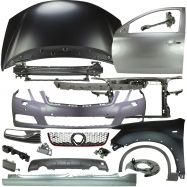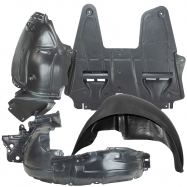Chevrolet Volt 2015-2019: A Brief History
The Chevrolet Volt, introduced in 2010, marked a significant step forward in the automotive industry as one of the first mass-produced plug-in hybrid electric vehicles (PHEVs). The 2015-2019 models represent the second generation of this innovative vehicle. Chevrolet aimed to improve the Volt's electric range, efficiency, and overall driving experience. The second-generation Volt featured a more refined design, advanced technology, and an extended electric-only range, making it a popular choice for eco-conscious drivers.
Pros and Cons of the Chevrolet Volt 2015-2019
Pros:
- Extended electric-only range compared to the first generation
- Modern and sleek design
- Advanced safety features and technology
- Quiet and smooth driving experience
- Low running costs due to electric power
Cons:
- Limited rear-seat space
- Higher initial purchase price compared to traditional vehicles
- Longer charging times without fast-charging options
- Potential battery degradation over time
Common Wear and Mechanical Parts for Chevrolet Volt 2015-2019
Owners of the Chevrolet Volt 2015-2019 often seek replacement parts to maintain the vehicle's performance and longevity. Commonly sought-after wear and mechanical parts include:
- Brake pads and rotors
- Battery packs and related components
- Electric drive unit components
- Suspension parts such as struts and control arms
- HVAC system components
- Charging ports and cables






 Contact us
Contact us

